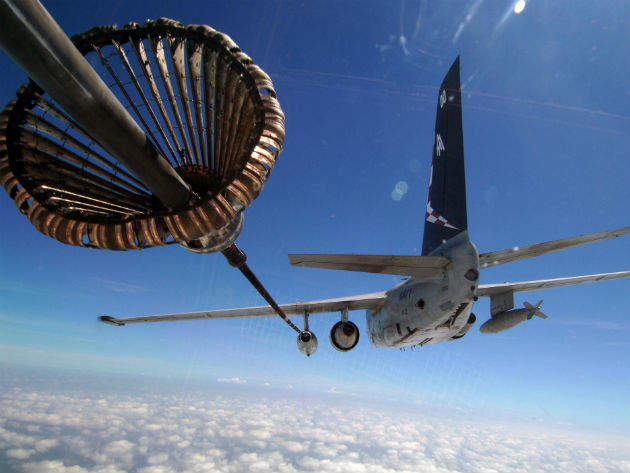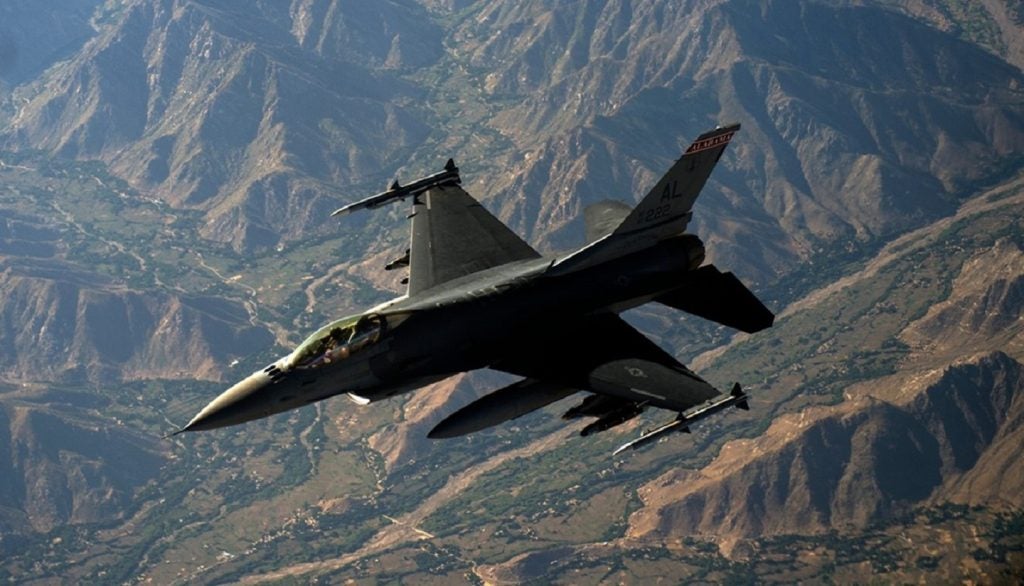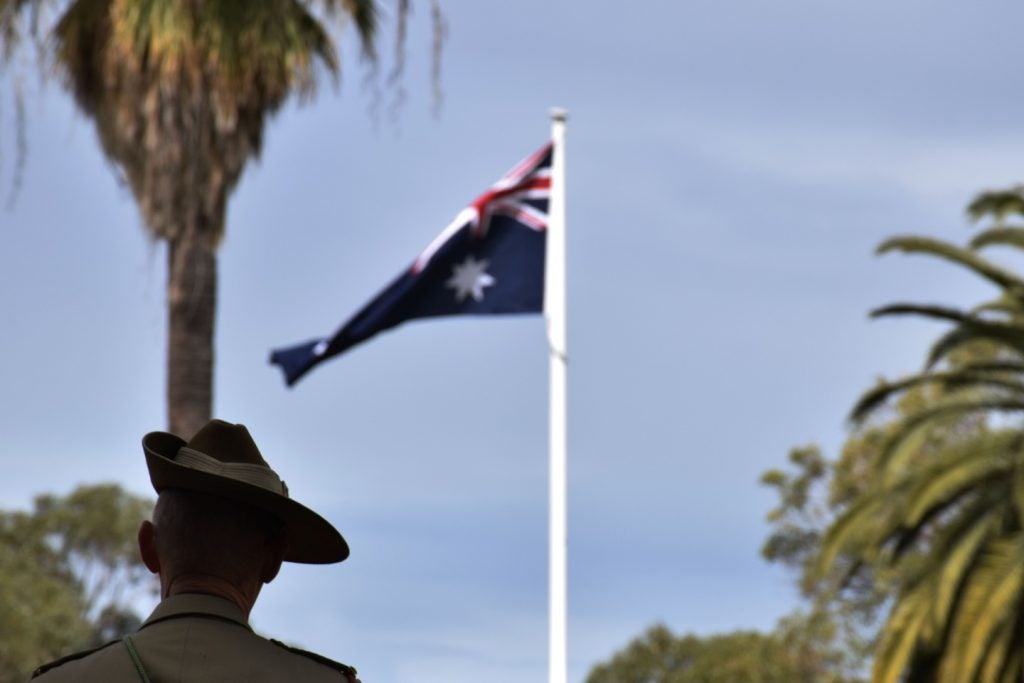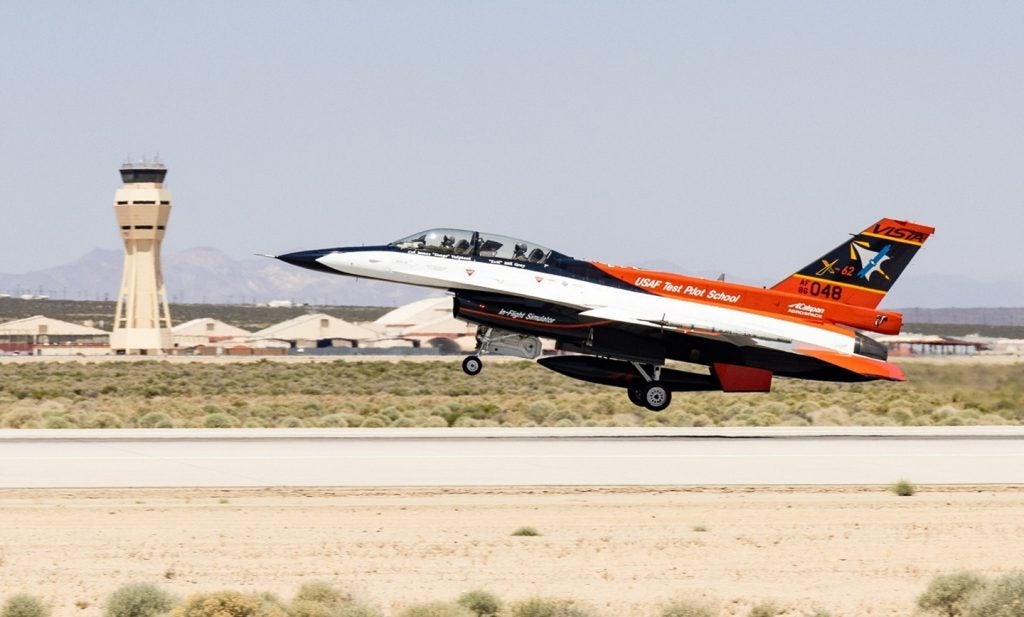

For today’s short combat radius platforms in particular, the growing frequency of sorties flown at ever-longer distances away from carriers or ground bases has increasingly made refuelling an essential mission component, and that is a trend that seems firmly set to continue in the future.
“To support overseas deployments anywhere in the world at short notice AAR is only becoming more important,” says James Kemmitt, product management director at Cobham Mission Systems – one of the world’s leading refuelling technology suppliers. That growing importance could, however, make life even more difficult for the crews who fly the tanker aircraft. Writing in a Brookings Institution Policy Paper back in 2014, US Navy Commander Gregory D. Knepper warned that the vast ranges predicted for future operations in contested airspaces risked turning AAR into a new strategic vulnerability and making airborne tankers into prized targets.
As Kemmitt explains, “future tankers will potentially need to provide in-theatre support to the receiver aircraft, meaning that they will have to be stealthy to avoid detection as well as having comprehensive defensive aids.”
Just what that next generation of tankers will look like remains to be seen, but last September’s press briefing from General Carlton Everhart II, Commander of the USAF Air Mobility Command, offered some clues as to the range of possible technologies being looked at.
It could, it seems, see a major step-change in approach, perhaps even moving away entirely from the established commercially derived aircraft that form the mainstay of AAR today, towards the likes of a flying wing design. Incorporating low-observable features and a disguised radar signature would then enable it to follow state-of-the-art stealthy fighters safely far into the anti-access, area-denial battlespaces of tomorrow, with high levels of automation bringing enhanced mission capabilities too.
How well do you really know your competitors?
Access the most comprehensive Company Profiles on the market, powered by GlobalData. Save hours of research. Gain competitive edge.

Thank you!
Your download email will arrive shortly
Not ready to buy yet? Download a free sample
We are confident about the unique quality of our Company Profiles. However, we want you to make the most beneficial decision for your business, so we offer a free sample that you can download by submitting the below form
By GlobalDataCurrent challenges and new capabilities
Long before many of the technologies likely to be suggested in response to General Everhart’s recently launched scoping study of the ‘KC-Z’ next-generation tanker even begin to approach readiness, however, Kemmitt points out that tankers and systems are evolving in unison to meet the increasingly challenging demands of today. “These include a wider operating envelope – airspeed, range and altitude – suitability for harsher environments, autonomous operation, lower life cycle costs, increased safety and reliability and reduced maintenance, roll on/roll off capability and compliance to new more stringent airworthiness regulations,” he says.
At the same time, changes on the other side of the equation are also improving tanker performance and operational efficiency, with the likes of the new standard A330 MRTT from Airbus promising a fuel-burn reduction of up to 1%. According to an Airbus spokesman, the new standard A330 MRTT incorporates a number of enhancements that have been introduced on the basic A330, as well as specific military upgrades as part of their continuous product improvement programme. In addition to the structural and aerodynamic modifications which help achieve the increased fuel efficiency, the new standard A330 MRTT also features upgraded avionics computers and enhanced military systems.
Flight testing of the first ‘new standard’ is underway, with the first delivery scheduled for 2018 – and there are more developments afoot.
The potential of automated refuelling technology
Flying fast-moving aircraft together in the close proximity required for refuelling, and not infrequently in a turn to ensure the tanker can hold on station, is always a potentially dangerous undertaking. To help reduce the associated risk while also minimising contact time, improving operational efficiency and reducing operator workload, Airbus has begun flight trials of automatic refuelling technology. Aimed to enable the automation of AAR boom contacts, it requires no additional equipment in the receiver aircraft and uses imaging technology to detect the position of the receiver and its receptacle.
“The receiver approach to the tanker is performed manually, as is the initial tracking of the receiver by the boomer,” the Airbus spokesman explains. “The imaging system acquires the receiver and the receptacle position, and the boomer can then accept the system aid while manually extending the telescopic part of the boom and making and maintaining contact.”
He says that proximity trials have already been conducted, and contact trials are planned for the near future.
Adding ISR capabilities to tanker aircraft
Looking beyond their main purpose, Kemmitt believes that to be effective in the coming conflicts, assets will need to be multi-functional and he sees tomorrow’s tankers doubling-up as flying sensor suites and data relay hubs in an increasingly networked battlespace.
Adding such intelligence, surveillance and reconnaissance (ISR) capabilities is another area that Airbus has already started to explore. The spokesman says that the company has been looking at bringing the likes of signals intelligence or airborne ground surveillance to the A330 MRTT platform, to allow it to perform simultaneous ISR tasks during a single mission, without affecting the aircraft’s primary role. Additional communication systems for the aircraft are also under consideration, as well as equipping it with appropriate sensors and a mission system.
“The proposals are currently being briefed to customers and generating substantial interest,” the spokesman says.
Time to send in the drones?
Nevertheless, budget cuts have left their mark on AAR as much as anywhere and Kemmitt says that with reduced defence spending meaning that there are few tankers, it is essential to have safe and effective procedures for interoperability between different nations’ tankers and receivers.
“Gaining clearance for an aircraft type to ‘tank’ is time-consuming and expensive, so developing more effective ways for allied air forces to share resources, allowing any receiver to take fuel from any tanker, is the big challenge at the moment,” he says. “Cobham [is] developing a probe and drogue simulator that will enable pilots to train [in] AAR techniques safely and cheaply before trying it for real.”
Budget constraints have also driven one of the most unexpected turnarounds of recent years in drone development too, with the Pentagon ending years of debate over the eventual role of the Unmanned Carrier Launched Airborne Surveillance and Strike (UCLASS) by turning it into a tanker. Having racked up an impressive array of ground-breaking successes – including ironically enough, the first ever fully autonomous aerial refuelling of a UAV in April 2015 – it seems that Salty Dog’s successor will now carry fuel, not munitions.
Originally designated the Carrier-Based Aerial-Refuelling System (CBARS), the MQ-25 Stingray Unmanned Carrier Aviation Air System (UCAAS) forms an important part in moves to address the US Navy’s looming shortfall in strike-fighter capacity, and the Pentagon’s rationale is clear. If the Navy cannot afford all the new aircraft it needs, then it must buy what additional Boeing F/A-18 E/F Super Hornets it can, accelerate its acquisition of Lockheed Martin F-35s, and turn its first carrier-based drone into an AAR asset to return those F/A-18s already modified for tanking duties to their primary role.
While it would clearly be wrong to suggest that the days of crewed flights are over, things are undoubtedly changing and as Kemmitt points out, “the proliferation of drones will mean that their refuelling will become commonplace like refuelling of manned aircraft is today”. With the dawn of the MQ-25 Stingray and the growing strategic vulnerability of crewed tankers in contested airspaces, perhaps UAVs doing the actual refuelling will gradually become more commonplace too.






